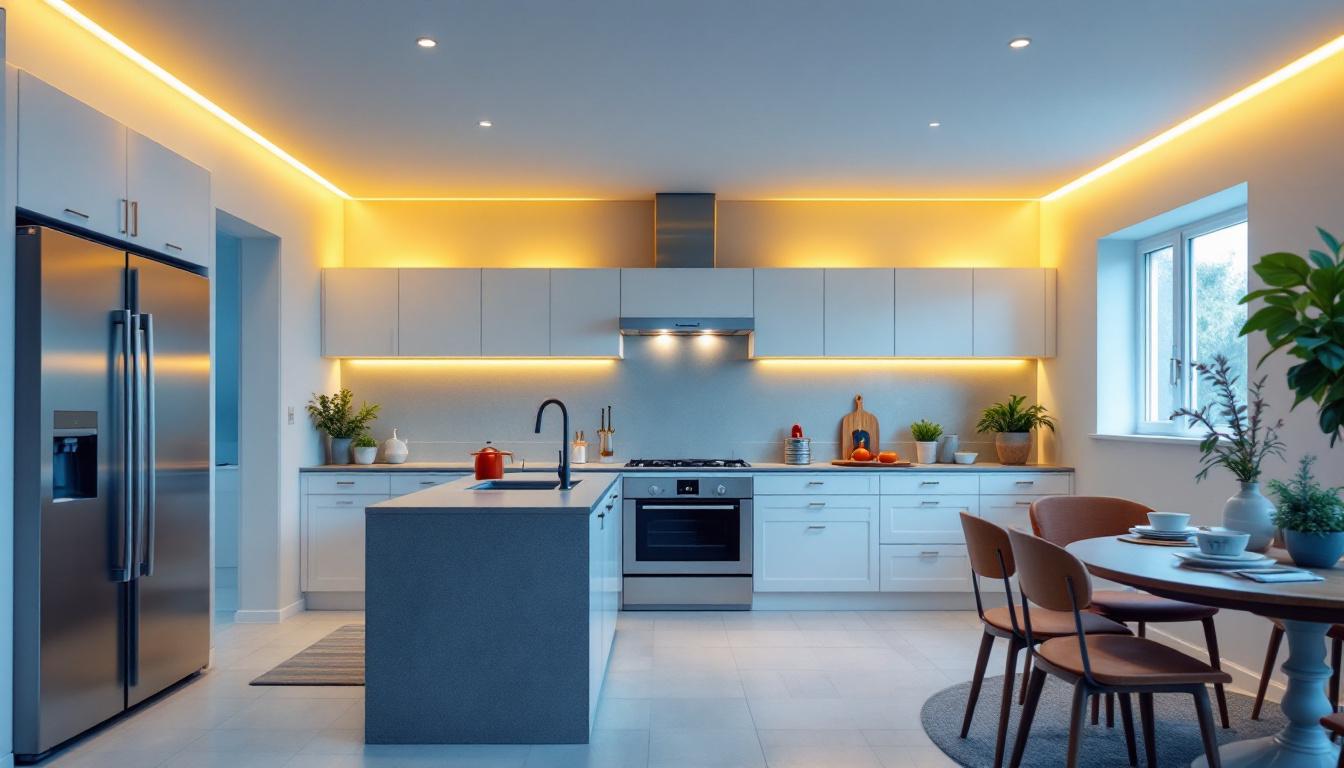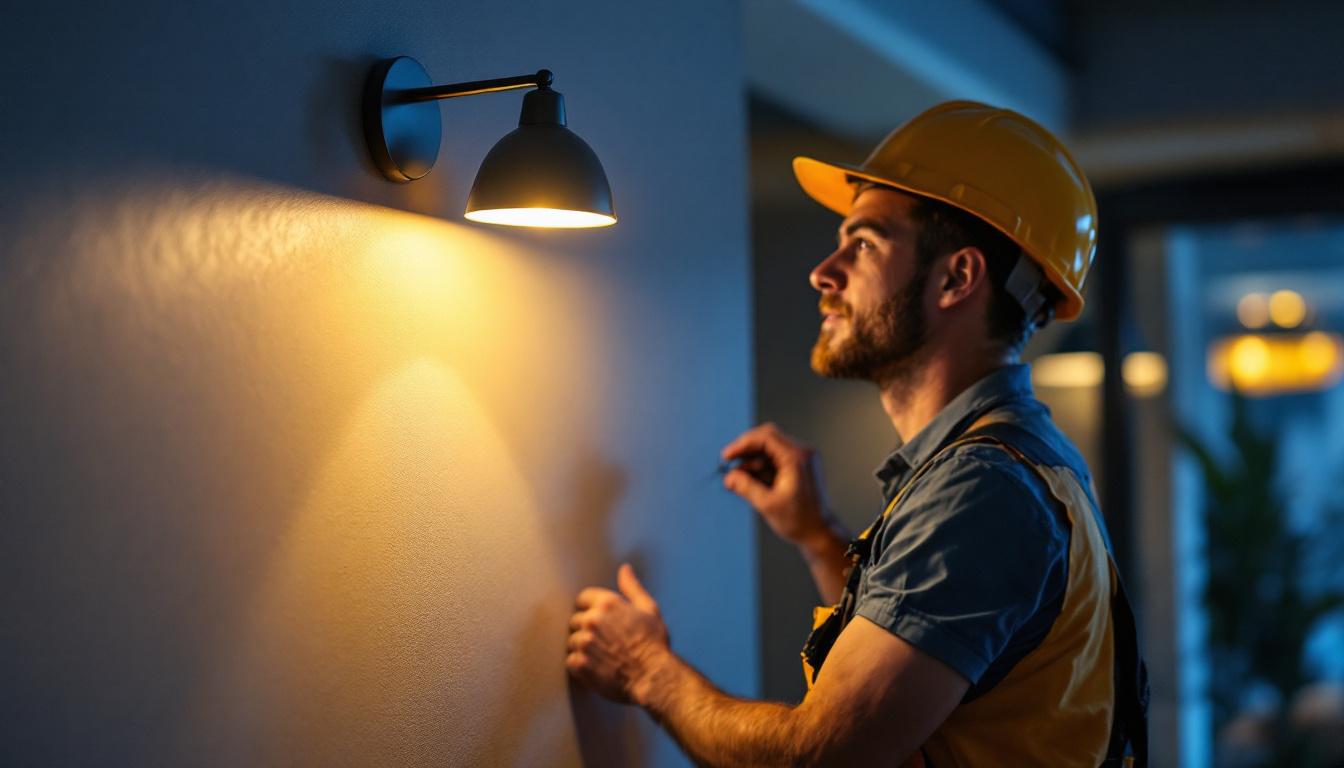
Lighting plays a crucial role in the functionality and aesthetics of a kitchen. For lighting contractors, understanding the best lighting options for kitchen recessed lights is essential not only for meeting client expectations but also for ensuring safety and energy efficiency. This article delves into the various aspects of recessed lighting, including types, installation tips, and the importance of proper lighting design.
Recessed lighting, often referred to as can lighting or pot lighting, is a popular choice for kitchens due to its sleek and unobtrusive design. These fixtures are installed into the ceiling, providing a clean look while maximizing headroom and minimizing visual clutter. Understanding the fundamental aspects of recessed lighting is vital for lighting contractors to effectively advise their clients. Proper installation and placement can dramatically alter the ambiance of a space, making it essential for contractors to consider factors such as ceiling height, room layout, and the specific tasks that will be performed in the kitchen.
There are several types of recessed lights available, each designed for specific applications and effects. The most common types include adjustable, fixed, and wall wash recessed lights. Adjustable lights are ideal for highlighting artwork or architectural features, while fixed lights provide general illumination. Wall wash lights are specifically designed to illuminate vertical surfaces, adding depth and dimension to the room. Understanding the nuances of each type can help contractors recommend the best fit for their clients’ needs.
Additionally, the choice of trim can significantly impact the light’s performance and aesthetic. Trims come in various styles, including baffle, reflector, and eyeball trims, each serving different purposes. Baffle trims are designed to reduce glare, making them suitable for general lighting, while reflector trims can enhance brightness and are often used in areas requiring more intense illumination. Eyeball trims allow for directional lighting, making them perfect for accentuating specific features. Lighting contractors should familiarize themselves with these options to provide tailored solutions for their clients, ensuring that both functionality and style are achieved.
Recessed lighting offers numerous benefits that make it an ideal choice for kitchen spaces. One of the primary advantages is its ability to provide focused illumination without taking up visual space. This is particularly important in kitchens, where counter space is often at a premium. By integrating recessed lights into the ceiling, homeowners can maintain a spacious feel, which is especially beneficial in smaller kitchens where every inch counts.
Moreover, recessed lights can be strategically placed to eliminate shadows and ensure that work areas are well-lit. This enhances safety while cooking and preparing food, making it a practical choice for homeowners. Additionally, the versatility of recessed lighting allows for various design styles, from modern to traditional, making it adaptable to any kitchen decor. Beyond aesthetics, energy-efficient LED recessed lights are now widely available, providing long-lasting illumination while reducing energy consumption. This not only benefits the environment but also helps homeowners save on their electricity bills over time. Furthermore, the ability to dim recessed lights adds another layer of flexibility, allowing homeowners to adjust the ambiance according to the occasion, whether it’s a lively family dinner or a quiet evening in.
The type of bulb used in recessed lighting significantly affects the overall ambiance and functionality of the kitchen. Lighting contractors must consider factors such as brightness, color temperature, and energy efficiency when recommending bulbs to clients.
Brightness is measured in lumens, and it is essential to choose bulbs that provide adequate illumination for the kitchen’s specific needs. For general lighting, a range of 2,000 to 4,000 lumens is typically recommended, depending on the kitchen size and layout. Task areas, such as countertops, may require additional focused lighting, which can be achieved through adjustable recessed lights.
Contractors should also educate clients on the importance of layering light in the kitchen. Combining recessed lighting with pendant lights or under-cabinet lighting can create a well-balanced and functional space.
Color temperature, measured in Kelvin (K), affects the mood and functionality of the kitchen. Warmer color temperatures (2700K to 3000K) create a cozy and inviting atmosphere, while cooler temperatures (4000K to 5000K) provide a more vibrant and energizing environment. For kitchens, a color temperature around 3000K is often recommended, as it strikes a balance between warmth and brightness.
Lighting contractors should encourage clients to consider their kitchen’s overall design and the atmosphere they wish to create when selecting color temperatures for recessed lighting. This will help ensure that the lighting complements the kitchen’s aesthetic while enhancing its functionality.
Proper installation of recessed lighting is crucial for achieving the desired results. Lighting contractors must be aware of various factors that can impact the effectiveness and safety of the installation.
The placement and spacing of recessed lights are critical to achieving optimal illumination. A common guideline is to space recessed lights approximately 4 to 6 feet apart, depending on the ceiling height and the light’s beam spread. For kitchens with higher ceilings, contractors may recommend wider spacing to ensure even light distribution.
Additionally, contractors should consider the layout of the kitchen when determining placement. Task areas, such as countertops and islands, should be prioritized to ensure they are adequately lit. A well-thought-out layout will enhance both the functionality and aesthetic appeal of the kitchen.
Electrical considerations are paramount when installing recessed lighting. Contractors must ensure that the electrical system can handle the load of the new fixtures and that proper wiring techniques are employed to prevent safety hazards. It is essential to follow local building codes and regulations during installation.
Furthermore, using dimmer switches can enhance the versatility of recessed lighting, allowing homeowners to adjust the brightness according to their needs. Lighting contractors should recommend compatible dimmers that work well with the chosen bulbs to provide clients with a flexible lighting solution.
As energy efficiency becomes increasingly important, lighting contractors must stay informed about sustainable lighting options. Recessed lighting can be an energy-efficient choice, especially when using LED bulbs.
LED bulbs consume significantly less energy than traditional incandescent or halogen bulbs while providing the same level of brightness. They also have a longer lifespan, reducing the frequency of replacements and waste. For contractors, recommending LED options can help clients save on energy costs and contribute to a more sustainable environment.
It is essential to educate clients about the benefits of LED technology, including its ability to produce less heat, which can contribute to a cooler kitchen environment. This can be particularly advantageous in warmer climates or during the summer months.
Smart lighting solutions are gaining popularity in modern homes, offering convenience and energy savings. Lighting contractors should consider incorporating smart recessed lighting options that can be controlled via smartphone apps or voice-activated devices.
These systems allow homeowners to customize their lighting settings, schedule on/off times, and even adjust color temperatures remotely. By integrating smart lighting into their designs, contractors can provide clients with cutting-edge solutions that enhance the overall kitchen experience.
While functionality is crucial, the aesthetic aspect of recessed lighting should not be overlooked. Lighting contractors play a vital role in helping clients achieve a cohesive and visually appealing kitchen design.
The trim and finish of recessed lights can significantly impact the overall look of the kitchen. Contractors should guide clients in selecting trims that complement their kitchen style, whether it be sleek and modern or classic and traditional. Options such as matte black, brushed nickel, or white can create different visual effects and enhance the kitchen’s decor.
Moreover, the choice of trim can affect the light’s beam spread and intensity. For instance, a baffle trim can help reduce glare, making it a suitable choice for areas where direct light is needed. Understanding these nuances allows contractors to provide tailored recommendations that align with the client’s vision.
Incorporating recessed lighting into the overall kitchen design can create visual interest and enhance architectural features. For example, using wall wash lights to highlight textured walls or artwork can add depth and character to the space.
Lighting contractors should encourage clients to think creatively about how recessed lighting can be used to accentuate design elements. By strategically placing lights, contractors can help clients achieve a dynamic and inviting kitchen atmosphere.
In summary, understanding the best lighting options for kitchen recessed lights is essential for lighting contractors. From selecting the right bulbs and ensuring proper installation to considering energy efficiency and aesthetics, contractors play a crucial role in creating functional and beautiful kitchen spaces.
By staying informed about the latest trends and technologies in recessed lighting, contractors can provide valuable insights and recommendations to their clients. The right lighting not only enhances the kitchen’s functionality but also elevates its overall design, making it a space where homeowners can enjoy cooking, entertaining, and spending time with family.
Ultimately, the importance of recessed lighting in kitchens cannot be overstated. For lighting contractors, mastering this aspect of their craft will lead to satisfied clients and successful projects, ensuring that they remain competitive in the ever-evolving lighting industry.
Ready to elevate your lighting projects with the best in recessed lighting solutions? Look no further than LumenWholesale, where we provide lighting contractors with superior, spec-grade lighting products at unbeatable wholesale prices. Say goodbye to local distributor markups and hello to our extensive selection that meets the highest industry standards. With LumenWholesale, you get the reliability and performance you need, coupled with the convenience of free shipping on bulk orders. Don’t compromise on quality or value. Discover wholesale lighting at the best value today and light up your kitchen projects with confidence.

Discover the top strategies lighting contractors use to maximize the impact of wall mount LED lights.

Discover the essential resources lighting contractors rely on to master fan switches.

Discover essential tips for using dimmer switches in your lighting projects and learn how to sidestep common pitfalls.

Discover the ultimate resources lighting contractors rely on to master ceiling fan sales.